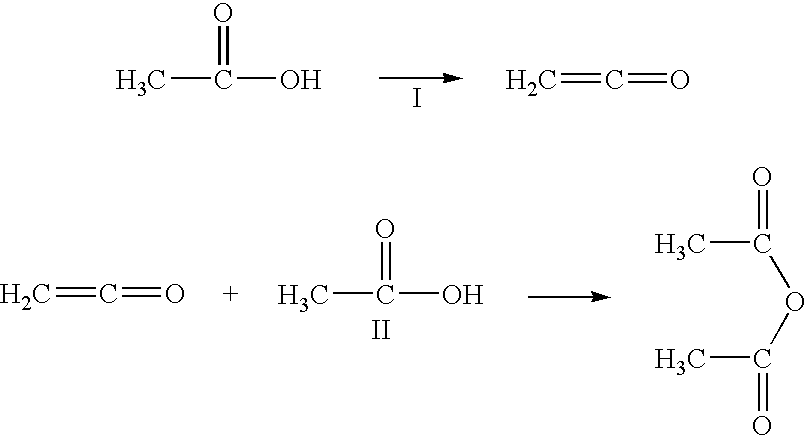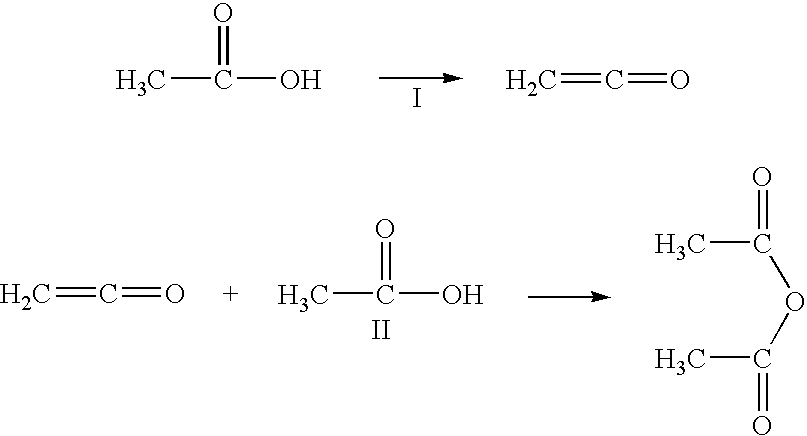Acetic anhydride and acetate ester co-production
a technology of acetic anhydride and acetate esters, which is applied in the preparation of carboxylic compounds, organic chemistry, chemistry apparatus and processes, etc., can solve the problems and achieve the effect of reducing overall purification investment and beneficial effect for azeotropic separation
- Summary
- Abstract
- Description
- Claims
- Application Information
AI Technical Summary
Benefits of technology
Problems solved by technology
Method used
Image
Examples
example
[0038] Process condensate obtained from a ketene furnace such as furnace 12 and a chiller train such as train 14 was continuously fed to a laboratory flasher apparatus consisting of a 0.5 liter electrically-heated reboiler attached to a vacuum-jacketed vapor-liquid disengagement section that directed vapors to a condenser and to a receiving vessel to collect liquid condensed from the overhead vapor stream. A process condensate sample containing about 61.3 wt % acetic acid, 38.2 wt % water, and 0.5 wt % non-volatiles was fed to the flasher apparatus while taking about 97.2% (w / w) of the feed as flasher distillate under atmospheric pressure conditions.
[0039] The flashed process condensate was analyzed to contain about 61.6 wt % acetic acid and 38.4 wt % water, and was then fed to the catalyst bed a 45-tray Oldershaw n-butyl acetate reaction tower (e.g. a tower such as tower 20). The homogeneous catalyst bed contained 1+ / −0.3 wt % methane sulfonic acid. Overhead vapors from the reacti...
PUM
| Property | Measurement | Unit |
|---|---|---|
| temperature | aaaaa | aaaaa |
| temperature | aaaaa | aaaaa |
| temperature | aaaaa | aaaaa |
Abstract
Description
Claims
Application Information
 Login to View More
Login to View More - R&D
- Intellectual Property
- Life Sciences
- Materials
- Tech Scout
- Unparalleled Data Quality
- Higher Quality Content
- 60% Fewer Hallucinations
Browse by: Latest US Patents, China's latest patents, Technical Efficacy Thesaurus, Application Domain, Technology Topic, Popular Technical Reports.
© 2025 PatSnap. All rights reserved.Legal|Privacy policy|Modern Slavery Act Transparency Statement|Sitemap|About US| Contact US: help@patsnap.com



